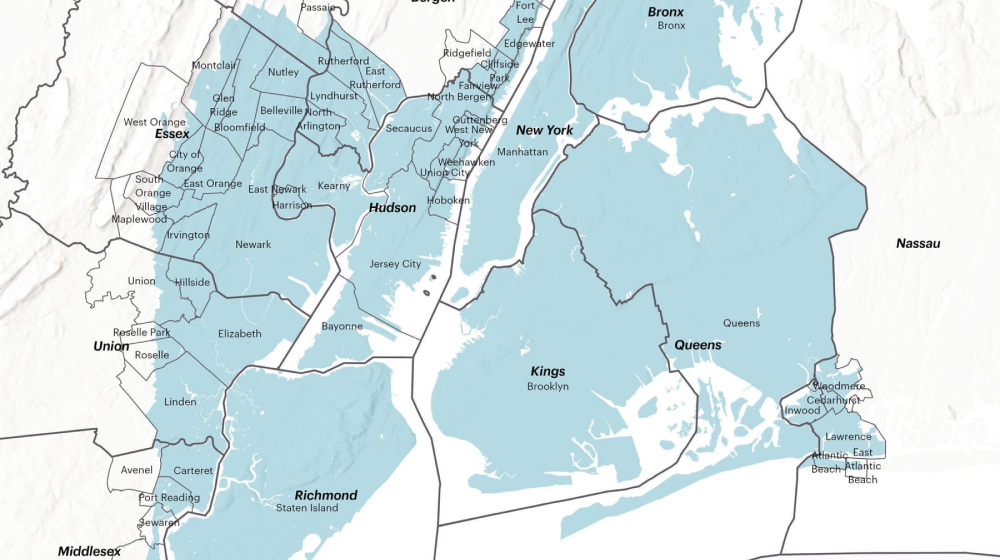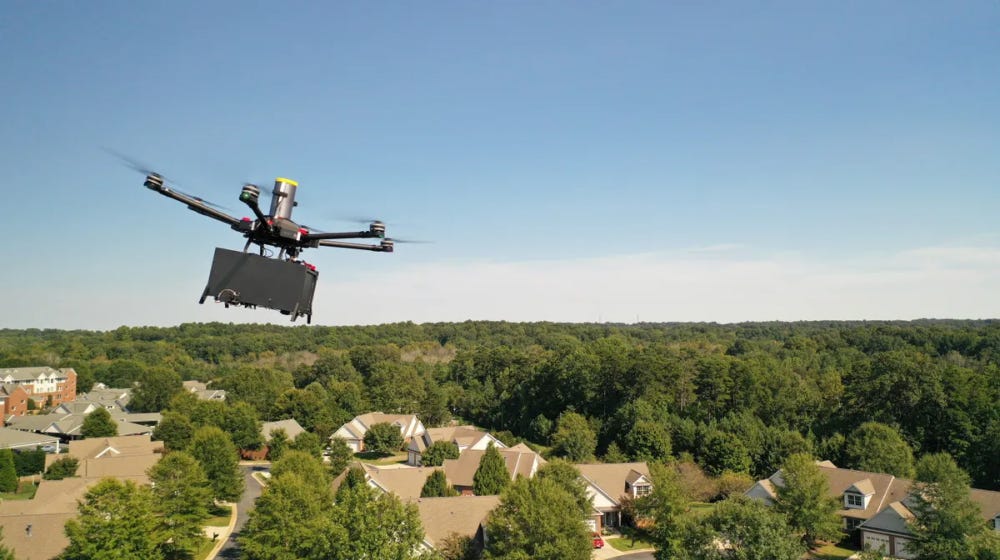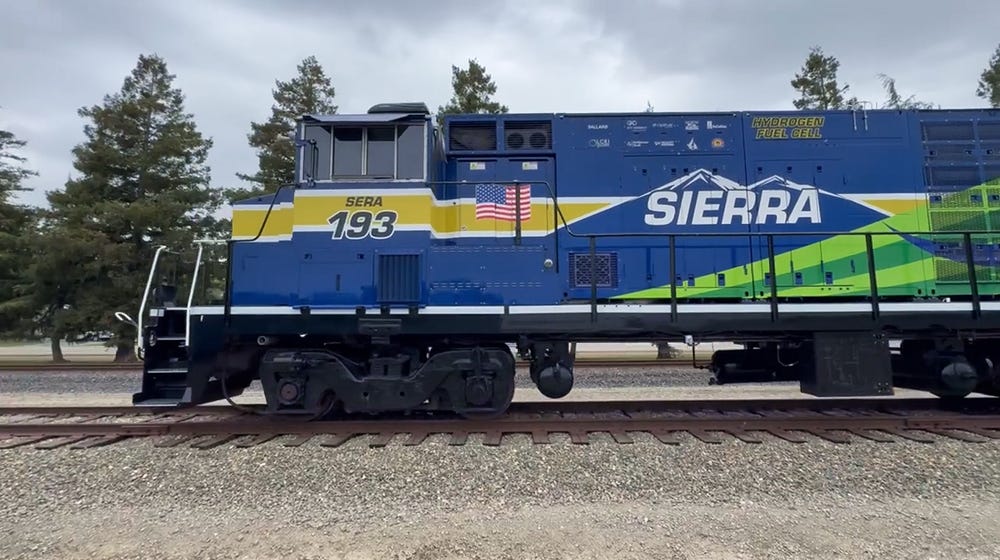Welcome to CoMotion NEWS, your weekly roundup of news and analysis of the mobility revolution. If this email was forwarded, you can sign up here for NEWS.
We’ve always been fans of congestion pricing, so of course we’re leading this week’s NEWS with data showing it's been a roaring success in New York. If only Philadelphia and Chicago, facing apocalyptic cuts to their transit systems, had a similarly effective way to raise revenue. Speaking of revenue, the transit world is debating the merits of fare-free buses –– what do you think?
Over in the private sector, Lime readies an IPO, making it one of the few micromobility companies that has proven profitability before going public. And fast-growing Chinese EV maker BYD comes up with a unique leasing arrangement in the UK that offers customers unlimited free charging. And then there’s news on hydrogen-powered trains, Ontario Premier Doug Ford’s nonsensical war on bike infrastructure in Toronto, and DoorDash’s launch of drone delivery. Last but not least, if Tesla is worth a trillion dollars largely based on the promise of autonomous vehicles, why is Waymo worth so much less?
What you need to know

Congestion pricing makes everything better: Data analyzed by New York’s Regional Plan Association show the six-month-old toll on vehicles entering lower Manhattan has improved travel time for everyone, including drivers! It has reduced traffic delays in the borough by 25% and reduced traffic delays in the region outside of Manhattan by 9%. Average time for bus trips has also dropped substantially. Don’t hold your breath waiting for any of the vociferous opponents of congestion pricing to admit they were wrong, but perhaps the program’s undeniable success will persuade them to leave it alone.
Lime prepares IPO: In sharp contrast to many mobility startups that went public during the heady days of the SPAC craze, Lime has actually achieved profitability and is eyeing a traditional IPO. IPOs have raised $27 billion this year, up nearly 50% from the same period last year but still way down from the $177 billion raised in the first half of 2021, the peak of the IPO boom.
Philly transit agency approves 45% service cut: The board of SEPTA, the transit agency serving the Philadelphia area, approves a budget that will shutter dozens of rail and bus routes, reduce frequency on other routes and hike fares. The cuts will begin to take effect within months if the state legislature does not come through with funds to close a $213 million deficit. Transit, however, is just one of many policy priorities that Gov. Josh Shapiro is trying to shepherd through a legislature divided by a Democrat-controlled House and GOP-controlled Senate. By the way, despite the frequent complaints about delays across SEPTA’s system, the agency is actually far more efficient in terms of dollars per riders than its peers around the U.S.
Free buses in the D.C. burbs: Ride On, the transit agency for Montgomery County, Md., becomes the latest transit system to eliminate bus fares, which were already only $1. Some transit advocates say the county should be more focused on improving reliability and frequency for a system that isn’t particularly reliable or frequent. They worry that the $2-3 million in lost fare revenue will make improvements to the system even less likely. One passenger who spoke to the Washington Post said eliminating fares is only fair since, “Ride On is so slow. So slow.” (Read more about the free bus debate below in “What We’re Reading”)
Toronto’s wildly successful bike lanes under attack: Ontario Premier Doug Ford, the voice of the province’s aggrieved suburban commuters, is fighting to undo the tremendous progress the city of Toronto has made on bike infrastructure in recent years. Most egregiously, he is proposing ripping out a bike lane on a major boulevard, where data show bike traffic is often heavier than car traffic. That’s just mean.

DoorDash gets into drones: The food delivery app partners with drone company Flytrex to fly hot food to customers’ backyards in two suburbs of Dallas: Frisco and Little Elm. This comes three weeks after Walmart, which has been conducting drone deliveries in the Dallas area for four years, announced it would expand its partnership with drone company Wing into five other Sunbelt cities. However, DoorDash boasts that its Flytrex drones can carry greater weight –– up to 6.6 lbs now and up to 8.8 lbs in the next generation model. It’s notable that retailers are first targeting low-density suburbs, where large backyards offer a larger margin of error and where people tend to live farther away from stores and restaurants.
Long live electric mail: The Senate parliamentarian has ruled that a measure to kill the Postal Service’s transition to electric vehicles cannot be included in the One Big Beautiful Bill. The USPS, which has already purchased 7,200 EVs and spent $500 million on charging infrastructure, warned that the proposed measure to kill the program would likely end up leading to billions in waste due to voided contracts.
Autonomous Vehicles in the European Union
📍 Room 5E2 Spinelli, European Parliament, Brussels 📅 July 2, 2025
Robotaxis are increasingly gaining traction in big American cities. But what about in Europe? Join CoMotion’s Managing Director, Tim Gribaudi leading the discussion ‘AV’s: showcasing real-life examples’ with Transdev Deputy Director, Mihai Chirca; Wayve Director of Global Public Policy, Sarah Gates; Einride General Manager, Henrik Green; A2A CEO, Fabio Pressi; and MOIA Public Affairs Manager, Jonas Wigger at 15:30 to 16:10 CET on July 2 organised by European Parliament Member Pierfrancesco Maran.
The benefits of lower speed limits in Italy: An analysis of speed data by GO-Mobility, an Italian transportation consultancy, estimates that in the six months since Bologna lowered the speed limit on city streets to 30 km/h (18.6 mph), the city has saved €150 million in reduced injuries, fatalities and property damage. And that’s despite the fact that only about 60% of drivers are complying. It is Italy, after all.
A Tesla milestone — amidst concerns: In good news for Tesla, for the first time ever, a new vehicle drove itself to the home of its new owner. In less good news, its robotaxis in Austin have already attracted the attention of federal regulators over reports of traffic violations.
BYD unveils first vehicle-to-grid bundle: The Chinese automaker is teaming up with Octopus Energy, a UK renewable energy group, to offer a £300 per month “bundle” that includes not only the vehicle but unlimited home charging. The vehicle, a BYD Dolphin, has built-in bidirectional charging capability that will allow the battery to sell energy back to the grid when demand is high.

More success for hydrogen-powered rail: Sierra Northern Railway will convert 12 diesel locomotives to hydrogen power. The hydrogen fuel cells, provided by Ballard Power Systems, will power “switchers,” small locomotives that pull train vehicles short distances, often within rail yards.
ICYMI
In the latest episode of CoMotion’s Podcast, Nick Perloff-Giles sits down with Steve Adler, former mayor and city councilmember of Austin, TX. They discuss the work required to bridge across interest groups, passing legislation with long time horizons, and how to build consensus for large-scale transit projects.
What we’re reading
The pros and cons of free buses: Zohran Mamdani, the presumptive Democratic nominee for mayor of New York, has called for making buses fare-free. Jarrett Walker, the influential transit consultant, says it’s a bad idea that will make the bus system overcrowded, slower and financially vulnerable. Others counter that a fare-free pilot the MTA ran showed positive results on a number of fronts –– higher ridership, fewer delays, fewer assaults on drivers. The bottom line: in the absence of fares, taxpayers will have to pony up.
Tesla proves Waymo’s value: Tesla’s limited robotaxi deployment in Austin, Tex. has been largely uneventful, although some videos have emerged of its vehicles violating traffic laws. But if the stated justification for Tesla’s $1 trillion market cap is its autonomous driving prospects, then why is Waymo, which is far ahead of Tesla in the robotaxi business, only worth $45 billion? Something about this doesn’t make sense, writes the Wall Street Journal’s Dan Gallagher.
CoMotion's mobility goodness brought to you by:
Jack Craver,
Editor, CoMotion NEWS
jcraver@comotionglobal.com
Write to us if you would like to suggest content for our next newsletter!
Partner with us
Our events CoMotion LA, CoMotion MIAMI, and the Monaco Hydrogen Forum represent a unique opportunity to build global awareness in the industry. Build influence, elevate your brand, and connect with ground-breaking companies and public sector leaders.
“It's really exciting to be at this year's CoMotion, with the best, most creative, and innovative minds together thinking about solutions on how we advance transportation.” - Laura Rubio Cornejo, General Manager, LADOT
Email us if you are interested in learning more.
YouTube | LinkedIn | Podcast | X | Instagram


